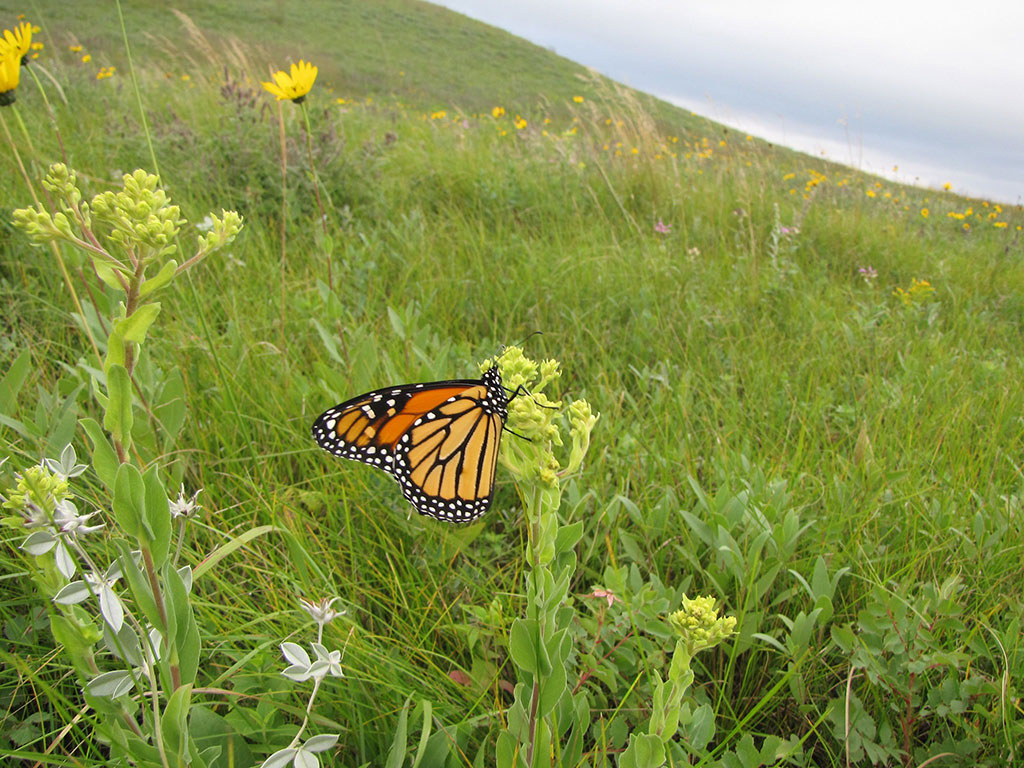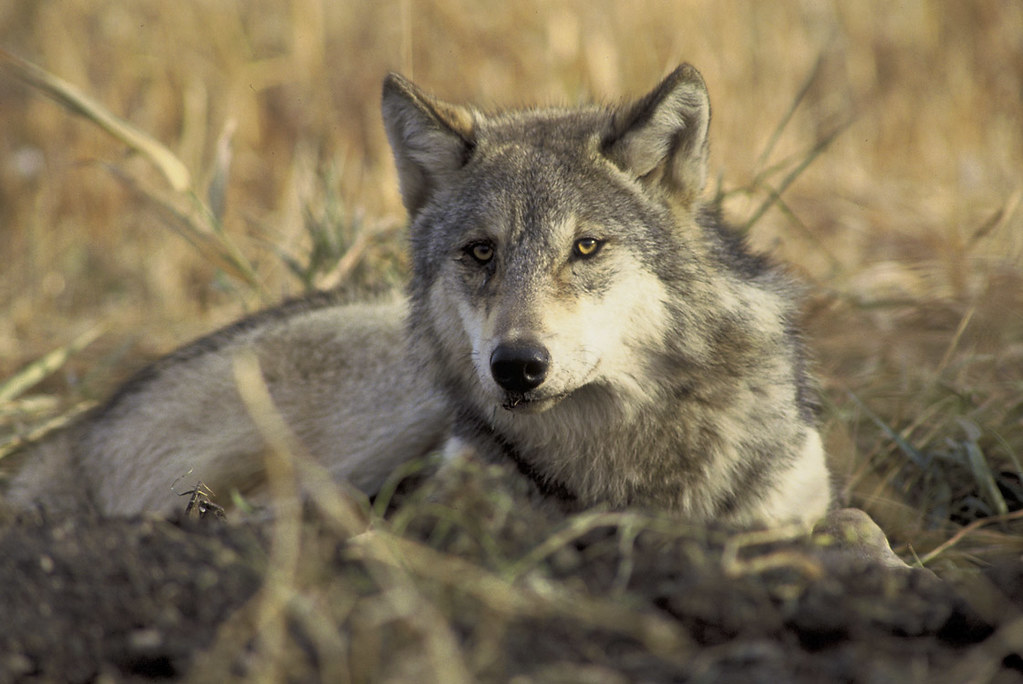The Trump administration announced its plans to overhaul its approach to a 45-year-old landmark environmental law that’s credited with saving some of the nation’s treasured species, a move that conservationists say will push more at-risk species to the brink.
The Endangered Species Act, passed by Congress in 1973 to protect rare wildlife from loss, has helped recover declining populations of bald eagles, humpback whales, American alligators and California condors, among others.
Sweeping new rules finalized Monday by the Trump administration will weaken how the law will be applied. Federal officials said the changes will increase certainty and transparency, bring the rules up to date and ease regulatory burdens while still conserving plants and wildlife.
Critics say the changes will gut one of the most effective environmental laws and put at risk many rare and fragile species, such as the monarch butterfly, the wolverine and others. The changes come as the United Nations warned in a May report that one million plant and animal species face extinction, many within decades.

A monarch butterfly at Sullys Hill Game Preserve in Fort Totten, North Dakota. (Photo Credit: USFWS)
Among numerous revisions, the changes remove a blanket rule that automatically extended the highest level of protection that endangered species got—including prohibitions against killing, harming or hunting animals—to those classified as threatened. Now, the fullest protections will be decided on a case-by-case basis. The revisions also strike regulatory language that prohibited economic considerations in deciding whether a plant or animal warrants protection.
As a practical matter, the changes might also limit the ability of regulators to factor in long-term effects such as climate change when deciding whether to list species as threatened. The pre-existing rules have classified species as threatened if they are likely to become endangered in the foreseeable future; the new rules say the term “foreseeable future will extend only so far into the future” as the agencies can reasonably determine.
The changes are expected to go into effect next month.
Leah Gerber, professor of conservation science and founding director of the Center for Biodiversity Outcomes at Arizona State University, said the new rules will undermine efforts to recover species. She said the act has been effective in preventing extinction but worried that the new changes would do the opposite.
Attorneys general with California and Massachusetts called the changes illegal and promptly announced they plan to sue the Trump administration. Massachusetts Attorney General Maura Healey said the rules would pave the way for approval of oil and gas and other development projects despite harm to species.
Conservation groups also promised a court fight.
Tom Lovejoy, a conservation biologist who coined the term “biological diversity,” said in a statement through the Endangered Species Coalition that the regulations “severely weaken our country’s key biodiversity protections so essential to prevent species extinction.”
More than 1,600 species—from polar bears to rare flowering plants—are currently protected by the law, which allows officials to designate critical habitat, makes it illegal to harm or harass species and requires recovery plans.
Species are listed under the act under one of two categories: “endangered” if they’re in danger of extinction from all or most of its range or ��threatened species” if they’re likely to become endangered in the near future.
Commerce Secretary Wilbur Ross said the revisions “fit squarely within the President’s mandate of easing the regulatory burden on the American public, without sacrificing our species’ protection and recovery.”
The American Petroleum Institute, an oil industry group, welcomed the changes, saying the streamlined regulations “ensure that public-private projects can further promote the conservation of habitat and protection of endangered species.”
Since 1969, the U.S. Fish and Wildlife Service says 99 percent of listed species have been prevented from going extinct through the FWS Recovery program, along with the efforts of its partners, according to a 2011 report.
Here are three species that the Endangered Species Act is credited with recovering:
Bald eagles
Adopted as the national symbol in 1782, the bald eagle teetered on the brink of extinction just decades ago. The population hovered near a low of about 400 mating pairs in the 1960s. The raptors were poisoned by contamination from DDT, a pesticide that washed into waters and accumulated in the fish the eagles ate, according to the U.S. Fish and Wildlife Service. They were also illegally hunted for their feathers and saw their habitat destroyed. Along with a ban on DDT in 1972, listing under the Endangered Species Act helped recovery efforts, according to the agency. Today, there are about 10,000 nesting pairs of bald eagles in the Lower 48. They’re no longer listed as endangered but are protected by other federal laws.
Southern sea otters
One of the smallest marine mammals, southern sea otters once flourished across the North Pacific Ocean before the fur trade, as well as oil spills, entanglement in nets and other factors, reduced their numbers. These playful creatures with thick fur and voracious appetites are considered a keystone species because of the important role they play as a predator in nearshore ecosystems—snacking on sea urchins, crabs, mussels and other invertebrates. Listed as threatened in 1977, the otters, sometimes known as California sea otters, numbered about about 50 in 1914. They rebounded to some 3,200 animals in 2017, but are still listed as threatened. To be considered for removal from the list, the population must meet the minimum threshold for three consecutive years.
Gray wolves
These top predators had nearly disappeared from the Lower 48 by the early 1900s. But their recovery has been cited by federal officials and conservation groups as one of the most successful comebacks under the Endangered Species Act. Trapping, shooting, poisoning and government-led programs to exterminate them contributed to their decline. When gray wolves were listed as endangered in 1974, they had all been eliminated from most of their historic range. Recovery efforts included a program to reintroduce the predators to Yellowstone National Park and central Idaho. In March, the U.S. Fish and Wildlife Service proposed removing protection for all gray wolves in the Lower 48 under the Endangered Species Act. The agency will weigh more than 750,000 comments as it comes up with a final determination.

Photo Credit: John and Karen Hollingsworth/USFWS under CC BY-SA 2.0
While many note the successes of the law in speeding the recovery of wildlife, conservation groups worry that other species in rapid decline won’t fare well under the new rules. Here are two examples, conservationists say, of creatures that are potentially at risk because of the changes:
Monarch butterflies
These large black-and-orange butterflies have sharply declined more than 80 percent over the past two decades. Several factors threaten monarchs, including development, logging, climate change and herbicide use that harm their host plant, milkweed. “People love monarchs. Even people who aren’t interested in wildlife conservation per se don’t want to live in a world without monarchs. They grew up bringing caterpillars in and watching them turn into butterflies,” said Sarina Jepsen, endangered species director for the nonprofit The Xerces Society for Invertebrate Conservation, whose group petitioned in 2014 to list the monarch butterfly as threatened under the Endangered Species Act. “They’re part of our heritage.”
The U.S. Fish and Wildlife Service is currently determining whether monarchs should be protected and a decision is expected in December 2020. If monarchs are listed as threatened, they would not have the same protection under the new rules, since the automatic protections for threatened species have been removed.
“One of the main concerns with the continued survival is the loss of their host plant milkweed, and a major factor in that is the use of herbicide,” she said. Under the older rules, even threatened species would be protected from actions—for example, an herbicide application to their milkweed host plants—that may harm them.
Wolverines
The fierce and elusive wolverine relies on high-altitude, mountain climes to reproduce, excavating deep (about 5 feet) into the snowpack to den. It’s believed there are about 250 to 300 of the animals in the Lower 48, according to the U.S. Fish and Wildlife Service. The large member of the weasel family faces threats, including declining snowpack due to climate change. There have been efforts over the years to list the wolverine under the Endangered Species Act. Most recently, following a federal court ruling in 2016, the U.S. Fish and Wildlife Service reopened its process to consider listing the wolverine as threatened.
Even if the wolverine does win protection under the act as a threatened species, Noah Greenwald, endangered species director with the nonprofit Center for Biological Diversity, says he’s worried the new Trump administration rules may render that status meaningless. He said the wolverine won’t have protections against “take”—actions that harm, harass or kill the animal. That could include limiting a ski resort or snowmobile trails in the areas where they live. Greenwald also questioned whether the federal agency would designate critical habitat for the wolverine. “If it has any chance of survival, it needs protection in the place where it occurs,” he said.
To learn more about the Endangered Species Act, visit the U.S. Fish and Wildlife Service’s website.
